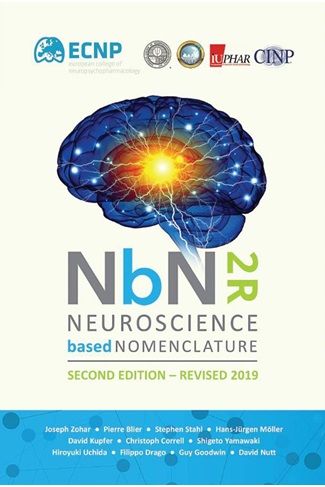Neuroscience-based Nomenclature (NbN)
 The lack of a meaningful connection between the nomenclature of psychotropic drugs and the underlying neuroscience of these compounds has been a longstanding concern within the neuropsychopharmacological community.
The lack of a meaningful connection between the nomenclature of psychotropic drugs and the underlying neuroscience of these compounds has been a longstanding concern within the neuropsychopharmacological community.
Together with representatives from American College of Neuropsychopharmacology (ACNP),The International College of Neuropsychopharmacology (CINP), Asian College of Neuropsychopharmacology (AsCNP), and International Union of Basic & Clinical Pharmacology (IUPHAR), the Neuroscience-based Nomenclature (NbN) task force was formed to address this concern.
The NbN is a publication and a digital application of psychiatric medications classified by their pharmacology and mode of action. The NbN is updated yearly, equipping clinicians with the latest insights in neuroscience in a way that can be applied to their treatment of patients on a daily basis.
The core principles of the NbN are:
- To move from a disease-based classification (e.g antidepressants, antipsychotics, anxiolytics, sleeping pills, mood stabilisers, etc.) to a pharmacologically driven classification, in order to shift from symptoms to mechanisms, from disease to pharmacology.
- To open the gate to contemporary neuroscience insights and to incorporate recent findings in brain research in the classification of drugs that are used to treat psychiatric disorders.
- To replace the 60-year-old nomenclature of psychotropics with an updated neuroscience-based nomenclature (NbN).
- To provide an important teaching tool that reflects the depth and richness of the neuroscience fabric of psychotropics.
The products of the NbN include:
- A number of books:
- NbN, NbN2, NbN2R, NbN2R 2019 edition, and NbN C&A.
- The NbN2R 2019 edition is now available on Amazon and as an eBook.
Learn more about NbN on Wikipedia and on YouTube:
